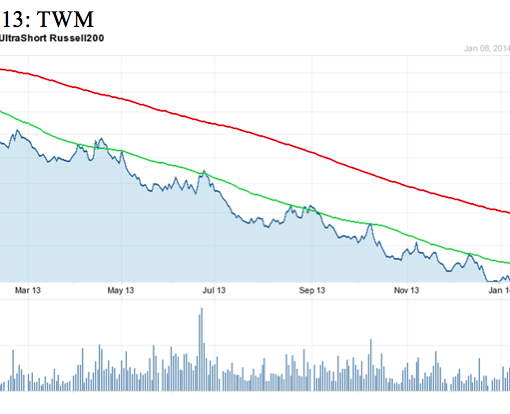Covestor model: Fortune’s Most Admired
Disclosure: Long AMAT, INTC
In September I purchased some Applied Materials (AMAT) and Intel (INTC) to increase my exposure to Tech. I eliminated the Rydex Equal Weight Consumer Staples ETF (RHS) because it is not replicable for Covestor subscribers.
I sold Whole Foods (WFM) to get away from the Consumer Staples category. The following is a list of companies under consideration as replacements: more QQQ and Berkshire Hathaway (BRK.B), Dell, Google, Amazon, or Cognizant Technology (I’m now including some foreign exposure, as I already have NWS, which is a sale candidate).
The IBD recently had an article about the strategy employed by Knoxville, Tennessee Asset Manager Mike Shell. In the article he refers to an academic study performed by Narisimhan Jegadeesh and Sheridan Titman of The University of California Graduate School of Management in 1993 entitled “Returns to Buying Winners and Selling Losers: Implications for Stock Market Efficiency”. The conclusion cited there, in a nutshell, is that buying stocks that have performed well and selling stocks that have performed poorly can generate significant returns when held for 3 to 12 months.
When I first began managing my models, I gave the most weight to the Schwab Equity Rating, which itself gives some weight to relative strength. The Schwab rating has compiled an enviable record, but it is not working well this year. I believe that it is because the market is favoring large caps. The Schwab rating covers a lot of stocks, including some pretty small companies like Famous Dave’s Barbecue (DAVE). When there are few analysts covering a company, and one or more have a favorable opinion on the stock, that company may be given one of the most favorable ratings by Schwab. Typically the rating is retained until analyst opinion shifts, even in the face of a market verdict that is decidedly different.
During the period of small cap dominance, the Schwab Equity Ranking System did well, indeed. I will cite two stocks that I sold just recently as examples of my revised strategy in action: Alcoa Aluminum and Freeport McMoran Copper and Gold, both in the materials sector. Alcoa is rated “A” by Schwab and FCX is rated “B”. I have held steadfastly until yesterday because the ratings remained consistently high with Schwab.
I have decided to accent the IBD composite rating as well as the Schwab Equity Rank in making my buy and sell decisions. Most likely this will entail somewhat more portfolio turnover, especially if I decide to use stop losses at the typical 7 or 8% decline level from the purchase price, as advocated by IBD’s O’Neill father and son team.
In my work at the MidSouth Investor hedge fund, I used relative strength in reverse in managing a short portfolio that performed really well during the time I was managing it (in the aftermath of the tech bubble). I am a strong believer in free market capitalism, a well as the idea of open source computer programs. In short, many players’ diverse opinions when backed up by the acquisition or disposal of a financial stake in the company is tough to argue with. I particularly like it when a CFO buys stock in his employing firm, especially in small caps.
Mike Shell’s success is probably attributable to his ETF concentration, which considers bonds, cash, gold, and stocks as a group with the SPY as the stock choice, I imagine. With his use of defensive stops and employment of Gold as an option, his performance has been impressive since he began in 2005.



